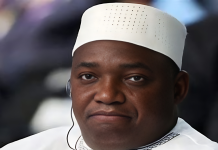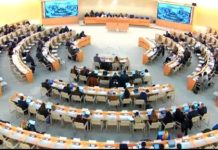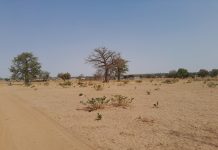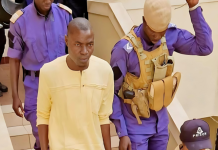Impunity, Disregard For Human Life
The Truth, Reconciliation and Reparations Commission in its Investigative Report alleged that operatives of the defunct National Intelligence Agency (NIA), acted with total impunity and disregard for human life.
As we moved to the institutional hearings of the TRRC Report and recommendations to the Government of The Gambia as well as the Government position on the ‘White Paper,’ we brought to you Theme 15 of the Report which talks about the most feared Security Institution under the former regime under Theme 15 thus: Institutional Hearings: National Intelligence Agency (NIA).
Background:
280. After the military coup d’état of 22 July 1994, former President Yahya Jammeh’s military Junta adopted several draconian laws to curtail human rights and freedoms. In essence, that was the beginning of the military government’s plan to rule by fear and remain in power. To achieve their goal, Decree No. 13 was passed on 3 November 1994 to establish the National Intelligence Agency (NIA) replacing the ousted democratically elected President Sir Dawda Kairaba Jawara’s National Security Service (NSS) whose brief was mainly intelligence gathering and state security. Decree No. 13 was repealed by Decree No.45 on 29 June 1995 which outlines the functions of the NIA and gave it enormous powers including powers formerly exercised by the police–to investigate and intervene in matters of private nature and those relating to national security. Section 1 (a) provides the NIA powers to “obtain and provide the government with information relating to actions or intentions of persons which may be a threat to state security.” Section 1 (a) along with other provisions laid out in Decree No. 45 gave the NIA unlimited powers, and Section 3(a) to (f) changed its function as an intelligence gathering Agency to an institution working for and on behalf of Yahya Jammeh–which President Jammeh could utilise to deprive Gambians of their rights and freedoms.
281. After Gambia’s transition from military to democratic rule in 1997, Section 7 (c) of the new Gambia Constitution enacted in 1997 absorbed all the decrees which were passed by Yahya Jammeh’s Armed Forces Provisional Ruling Council (AFPRC) as part and parcel of Gambian law. In essence, this meant that all the powers that were conferred to AFPRC council members under Decree No. 45 was now vested on former President Yahya Jammeh alone as provided in Section 191, subsection 1 which states:
“There shall be a National Intelligence Agency which shall be under the command of the President.”
282. The NIA was divided into several Units during its designation as the NSS – including the Counter Espionage Unit; Political and Dissidents Unit; Economic Sabotage Unit; External Security Unit; and the Operations Room. Following its transformation into the NIA, an Investigation Unit was created followed by the creation of the Special Operations Unit much later. The Investigative Unit and Special Operations Unit undertook the roles and responsibilities previously assigned to the police, the drug enforcement authority, the Immigration Department, etc. Created in 2007, the Special Operations Unit became infamous for its brutality, total disregard for due process, and human rights and fundamental freedoms.
283. The Investigation Unit exemplified the operational wing of the Agency – identifying perceived threats to the government of dictator Yahya Jammeh. Its operatives acted with total impunity and disregard for human life and dignity–in their attempt to fulfil Yahya Jammeh’s self-perpetuation agenda at whatever cost including striking terror in the hearts of ordinary Gambians.
284. The National Intelligence Agency (NIA) was one of Yahya Jammeh’s weapons of choice, utilised by the former dictator against the people and anyone who opposed his regime. Torture, sexual violence against women detainees, unlawful arrests, enforced disappearances, destruction of evidence, were some of the tools utilised by the Agency to advance Jammeh’s cause. Since its inception, it has been involved in numerous gross abuses of human rights in its attempt to sustain former President Jammeh in power. Individuals who have been arrested or detained in its detention centres became a cross cutting during the TRRC hearing, affecting most, if not all the themes during the Commission’s public hearing.
285. The Commission investigated various matters pertaining to the NIA’s gross abuses and violations. The areas investigated by the Commission included:
On the Farafenni Attack:
286. In November 1996, the Farafenni Military Barracks was attacked by rebel forces who wanted to overthrow Yahya Jammeh’s military government. The rebels of that attack included Yahya Drammeh, Ballo Kanteh, Omar Joof Dampha, Sulayman Sarr and Essa Baldeh. Their attack on the military barracks led to the death of some Gambian soldiers. The Commission notes that, although the rebels’ attack was unlawful and cowardly, resulting in the death of innocent Gambian soldiers, defending the territorial integrity of the country, the attack of the Farafenni Barracks is not the Commission’s focus of investigation, rather, the actions and conduct of security personnel after the rebels were arrested from various locations and taken to the NIA Headquarters in Banjul.
287. With reference to the Farafenni Military Barracks attack, the Commission found that during Ballo Kanteh’s interrogation at NIA premises he was tortured by Lamin AMS Jobarteh (nicknamed Babadinding), Captain Samsideen Sarr (second in command in the Army at the time) and other security personnel. It also found that Ballo Kanteh and Yaya Drammeh were further tortured by Harry Sambou, Salimina Drammeh, Foday Barry and an unidentified man referred to as Ninja.
288. The Commission found that torture was commonly used by NIA officials to extract a confession. The Commission further concluded that the former dictator President Yahya Jammeh knew or had reason to know about the tortures of the Farafenni attackers during their interrogation at NIA premises. The Commission therefore holds Yahya Jammeh, Foday Barry, Salimina Drammeh, Lamin AMS Jobarteh (Babandinding), and Baba Saho responsible for the tortures of Ballo Kanteh, Omar Dampha, and Essa Baldeh at NIA premises.
289. The Commission investigated various matters pertaining to the NIA’s gross abuses and violations. Some of the areas investigated by the Commission with its findings are outlined below:
To be continued……



















